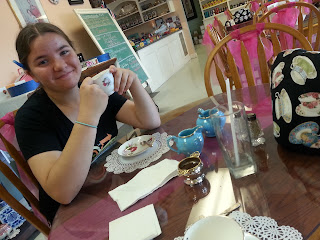Rainbow over the Hudson's Bay Company, established in 1670.
Golden Boy is a statue on top of the Manitoba Legislative Building
I've been to Winnipeg many times in my childhood, visiting Grandpa and Grandma Bailey, with trips to the The Bay to see the windows lit up for Christmas, or travelling with the Saskatchewan table tennis team to tournaments. I do love Winnipeg, and I'm happy to be here for the 2016 Canadian National Table Tennis Competitions with Team Saskatchewan.
Paul Noel, provincial coach, with Nigel, Mustafa, and Josh.
Nigel Dubois is one of my table tennis stars from my high school club. He grew up on Ochapowace First Nation, but now lives with an older brother and his family on Pasqua First Nation. As we were driving here from Fort Qu'Appelle, we passed the turn-off to Ochap, and being on that land, with Nigel in the car, made me wonder about the histories of his people. Now that we're in Winnipeg, I'm wondering about his last name, Dubois, and if one of his ancestors might have worked for the Hudson's Bay Company as a trapper or voyager, or if someone was a "country wife". I imagine there are many stories of how his people, Cree and Saulteaux, interacted with the Hudson's Bay Company after 1670; some may be good, but I know HBC played a significant role in the colonization of this land, and that is story full of sadness.
I'm getting some help with my historical thinking these days as I prepare to attend the Historical Thinking Institute in Vancouver next week. My first homework reading is "What is Historical Consciousness?" by Peter Seixas. I am to journal in three parts: summary, responses, and questioning.
Just for fun, I am going to insert pictures between my notes as an act of reflection and questioning.
Before leaving for Winnipeg, my daughter Arwen and I were having a mommy daughter date at the "Vintage Tea Room".
Tea leaves at Vintage Tea Room
What is citizenship? A responsibility to a collective, and the collective can act according to the will of the citizens. There is a collective past and a collective future that a citizen navigates, "...a loose narrative trajectory that situates decisions in the present between an imagined past and an imagined future." This gets more and more complex as our citizenship reality is more diverse, or maybe I can add, as "we" (those with societal power) become more aware of the diversity.
Our provincial team has recent immigrants, settler descendants, and Indigenous Canadians.
What is history education? Some think it is a grand narrative, but this is problematic in that it over simplifies what is important, memorable, worthy of citizenship focus and discounts the importance of citizen participation in the knowing of history.
Nigel and I pulled over in Brandon to get a picture with this yellow bomber. "I can just imagine being in that gunner chair. It would be so scary," said Nigel.
What is historical consciousness? Asking deep questions between public memory, citizenship and historical education which connect the past, present and future; can be asked by anyone, not just historians; deep questioning is easy to ask but hard to answer. When we answer, we can evaluate our responses by the following:
- comprehending how choices are interpretive as we view echoes from the past to make historical meaning;
- realizing there is "pastness" with obvious distance from today, but there are also connections and consequences from this "pastness" onto today; and
- seeing the complexity of circumstance , the circle of reality, which includes"multiple causes, conflicting belief systems, and historical actors' differing perspectives."
A few weeks ago, Keitha Brass and I viewed the Pasqua Pictograph and read her Great Grandfather's words at the signing of Treaty Four. Keitha is two of the remaining Great Grandchildren of Chief Ben Pasqua.
Taking history teaching from the grand narrative of facts and figures complicates things so that they become "More challenging but more relevant". "Second Order Concepts" like evidence, accounts, causes, significance, continuity and change, progress and decline, empathy/perspective taking, moral judgement and agency will help us have a "different kind of history education" where we realize that we actually build history through the details we choose to listen to and connect, weaving together a new narrative.

- What Treaty is Winnipeg part of?
- Did Louis Riel walk in Winnipeg, past any of these landmarks?
- Do the Dubois have history with the Hudson's Bay Company?
- Will any of my adult twelve students be from Pasqua First Nation?
- Would we be able to help the Royal Saskatchewan Museum as they prepare to exhibit the Pasqua Pictograph?
- What is the historic story of Golden Boy?
- What connections are there between the Hudson's Bay Company in Fort Qu'Appelle and this building outside my window?
- How do tea cups speak to me and my Treaty Walks?
- Why did so many First Nation peoples serve in the British and Canadian military?
- Do two spirited people use the symbol of the rainbow? What symbols do they use?
- Are Talisa's parents both from Treaty Six Territory or is Mike's family from Treaty Ten or Eight in the far north?
- When Arwen and Talisa were having tea in the Vintage Team Room, was it the right time for me to introduce colonialism, unsettling, and decolonizing?
Arwen and Talisa at Vintage Tea Room
Nēhiyawak and Newcomer
Menu cover with British flag backgound
Reserved
Unreserved
Unsettling
Treaty Walks, the Next Generation















No comments:
Post a Comment